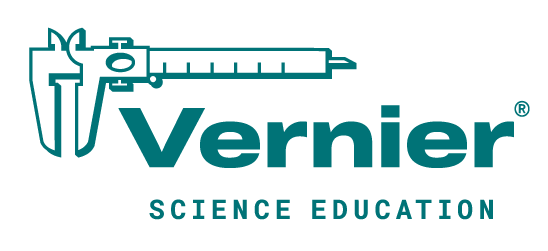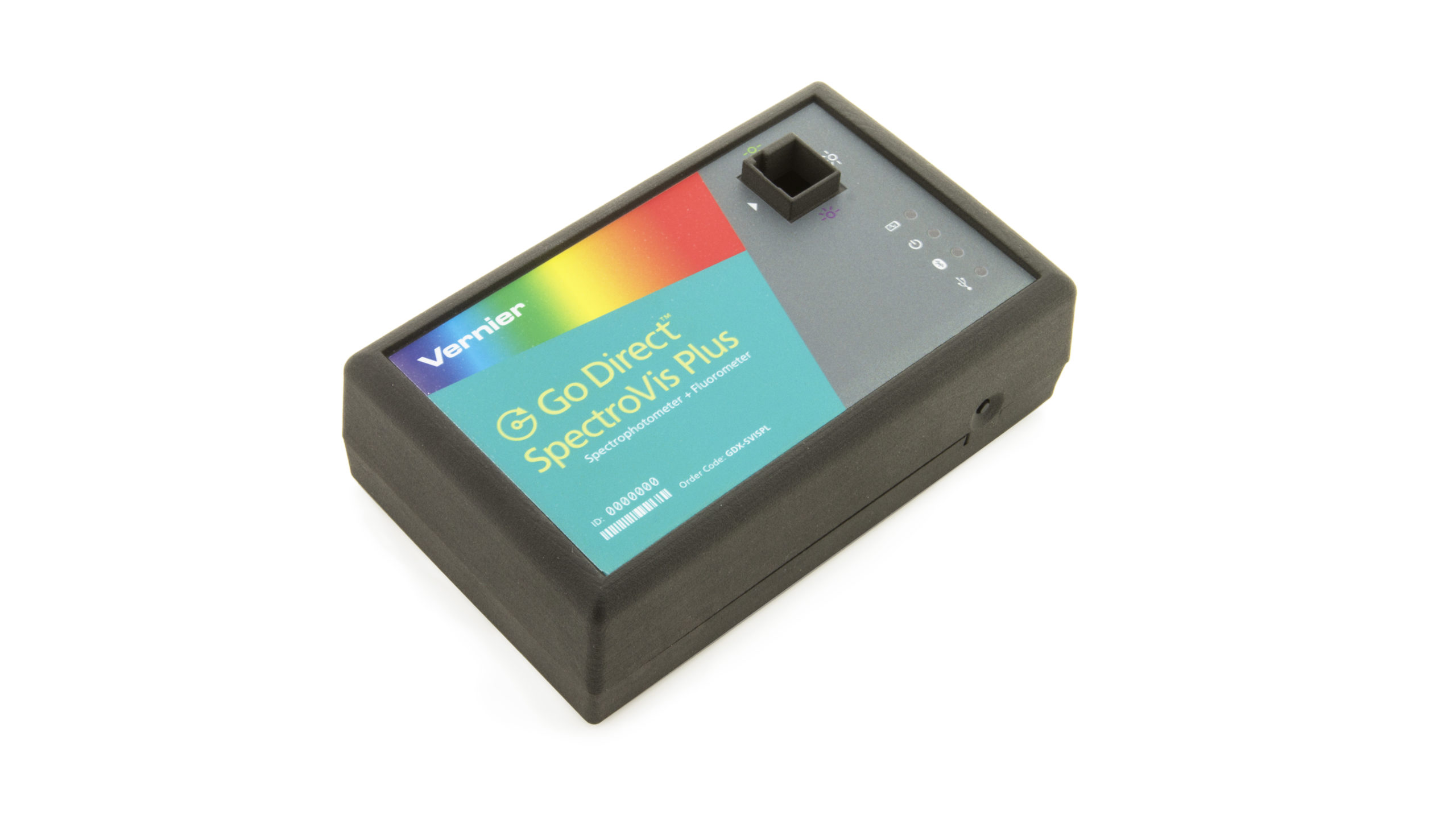Please read the user manual for general usage information.
Troubleshooting
- Primary Test: Are you using LabQuest App v2.7.2, or Spectral Analysis v4.4 (or newer)?
- Secondary Test: If you are collecting data via USB, you do not need the battery installed or the AC power cable connected. Removing both of these will likely solve most issues.
In general, we recommend removing the Go Direct SpectroVis Plus battery if you are not using the device wirelessly. The AC power adapter is only needed to charge the battery and is not required for operation.
Additional Troubleshooting
MOST COMMON
- My Go Direct SpectroVis Plus is not identified or won't turn on.
- My Spectrometer is not working properly. It won't calibrate or is giving very noisy data.
- LabQuest Not Recognizing SpectroVis Plus or Showing Bad Data
- Can the lamp in my spectrometer be replaced?
- My Go Direct SpectroVis Plus Spectrophotometer intermittently drops the connection while using Bluetooth.
- Spectrometer Error: 'Could Not Collect Values' or 'Calibration Failed'
- Why can't my device find Go Direct Spectrometer when I try to connect via Bluetooth?
GENERAL
- What is the difference between all your spectrometers?
- What is the difference between the Go Direct Visible Spectrophotometer and the Go Direct SpectroVis Plus? Why does one cost so much more than the other?
- How is the Go Direct SpectroVis Plus Spectrophotometer different than the SpectroVis Plus?
- Why does my LabQuest battery drain so quickly when connected via USB to a Go Direct sensor/spectrometer?
- How do I check the lamp output of my spectrometer?
- Why is the absorbance reading on my device (spectrometer/colorimeter) unstable or nonlinear at values above 1.0?
- Why don't all of my spectrometers and/or colorimeters read the same absorbance value for the same sample?
- Why don't the absorbance readings for the colorimeters and spectrometers have units?
- What is the Z dimension or beam height of your Spectrometers?
- What is the path length for the Vernier-branded spectrometers?
- Does my Go Direct SpectroVis Plus Spectrophotometer firmware need to be updated?
ACCESSORIES
- What is the difference between the types of cuvettes you sell for colorimeters and spectrophotometers?
- Do you sell replacement lids for your plastic cuvettes?
- What types of liquids can be poured into your plastic colorimeter or spectrophotometer cuvettes without harming the cuvette?
- Where can I get quartz cuvettes for your spectrophotometers?
- Are 4-sided clear cuvettes required when doing fluorescence experiments with SpectroVis Plus or Go Direct SpectroVis Plus?
- Does the Vernier Spectrophotometer Optical Fiber work with any of the Ocean Optics Spectrometers or vice versa?
SOFTWARE
- Spectral Analysis Troubleshooting and FAQs
- What spectrometers are supported in Spectral Analysis?
- Is there a way to toggle on/off the colored background behind the absorbance spectrum graph?
- When should I use the Intensity Correction for my Vernier-branded Spectrometer?
- Why is the maximum sample time for a spectrometer set at 1000 milliseconds?
- Will the SpectroVis Plus or Go Direct SpectroVis Plus work with LoggerLite?
- How can I overlay two emission spectra graphs in Logger Pro?
- How can I display both Absorbance and % Transmittance, from Spectrometer measurements, in Logger Pro 3?
- Can I have my spectrometer capture full wavelength spectra episodically?
- I collected Absorbance data and then Fluorescence data (or emission data) with my spectrometer. I am now collecting Absorbance data again and my data does not look correct.
- Why can't my device find Go Direct Spectrometer when I try to connect via Bluetooth?
EXPERIMENTS
- Do you have labs written for your spectrophotometers?
- Can I use my spectrometer to collect data at one wavelength (Beer's law or kinetics)?
- How do I run the AP Chemistry food dye lab with a colorimeter instead of a spectrophotometer?
- Do you have instructions on how to use a spectrophotometer to conduct the Photosynthesis lab?
- Do you have an experiment written for quantitative analysis using the GDX-SVISPL fluorescence capabilities?
- Are there some readily-available substances I can use to measure fluorescence with a SpectroVis Plus?
- Can I do blackbody experiments with your Spectrometers?
- Why can't I see better Hydrogen emission lines with my spectrometer?
Specifications
- Light Sources
⚬ Incandescent white bulb (~ 8000 hour lifetime)
⚬ LED-based support (~100,000 hour lifetime) - Fluorescence: Excitation LEDs centered at 405 and 500 nm
- Detector: Linear CCD
- Slit Width: 25 μm
- Wavelength Range: 380 to 950 nm
- Wavelength Reporting Interval: ~1 nm (collects 570 values)
- Optical Resolution (FWHM): 5.0 nm
- Wavelength Accuracy: ±4.0 nm
- Photometric Accuracy: ±0.10 A.U.
- Typical Scan Time: ~2 s
- Operating Temperature: 15 to 35ºC
- Dimensions: 15 cm × 9 cm × 4 cm
- Z Dimension (Beam Height): 8.5 mm
- Connections
⚬ Wireless: Bluetooth® v4.2 (wireless range 30 m unobstructed)
⚬ Wired: USB 2.0 full speed - Battery: High-capacity, lithium-ion rechargeable battery
Calibration
Calibrate this sensor? Yes, in absorbance and transmittance modes. Calibration when using emissions or fluorescence modes is optional. See calibration instructions below:
- Start the calibration.
⚬ Logger Pro: Choose Calibrate ▶ Spectrophotometer from the Experiment menu.
⚬ LabQuest App: Choose Calibrate ▶ USB: Spectrophotometer from the Sensors menu.
⚬ Spectral Analysis: Select to start an Absorbance or Transmittance experiment.
Note: For best results, allow the Spectrophotometer to warm up for a minimum of five minutes. - Fill a cuvette about 3/4 full with distilled water (or the solvent being used in the experiment) to serve as the blank. After the spectrophotometer has warmed up, place the blank cuvette in the spectrophotometer. Align the cuvette so a clear side of the cuvette is facing the light source.
- Follow the instructions in the dialog box to complete the calibration, and then tap OK.
Related Products
- Vernier Spectrophotometer Optical Fiber (
VSP-FIBER ) - Plastic Cuvettes (4 sided - Clear) (
CUV-4S ) - Plastic Cuvettes (UV-VIS) (
CUV-UV ) - Cuvette Rack (
CUV-RACK ) - Mini USB-C Cable (
CB-USB-C-MINI )
Replacement Parts
- Mini USB Cable (
CB-USB-MINI ) - Plastic Cuvettes (Visible Range) (
CUV ) - Cuvette Lids (100 per pack) (
CUV-LID ) - LabQuest® 2, LabQuest Stream™, and Go Direct SpectroVis Plus Battery (
LQ2-BAT ) - LabQuest® Power Supply (
LQ3-PS )

